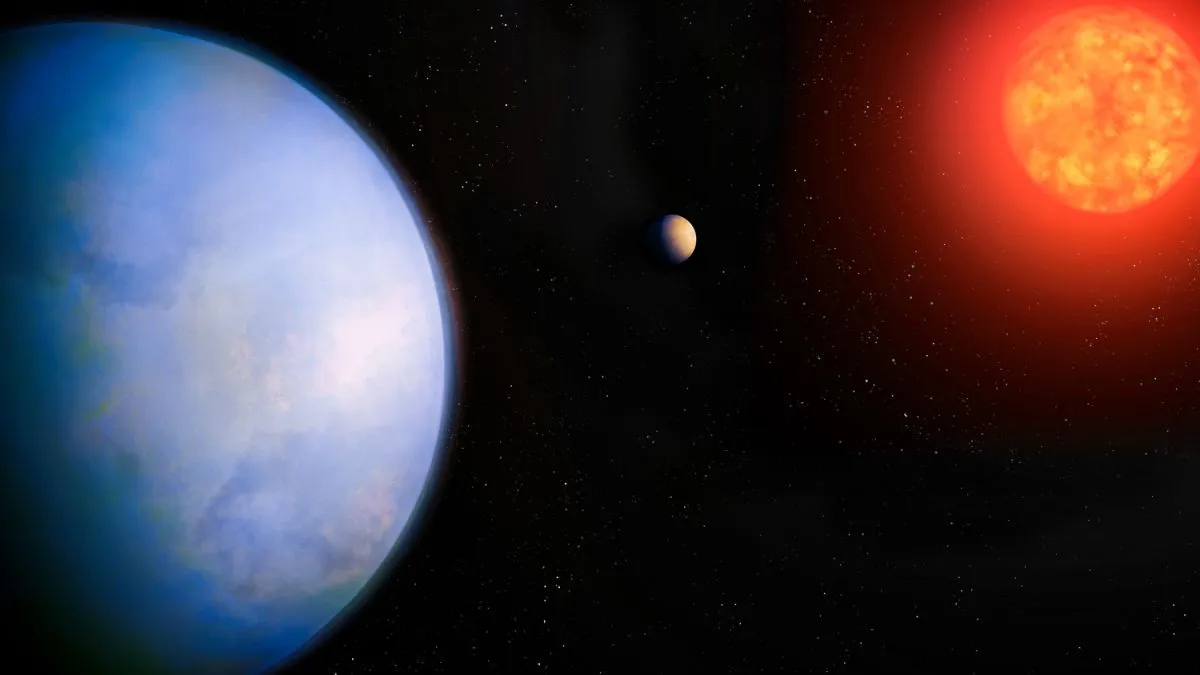
A groundbreaking discovery has emerged in the field of astronomy, as a new exoplanet candidate named GJ 251c has been identified, potentially marking one of the most promising worlds to search for extraterrestrial life. Located a mere 18 light-years away, GJ 251c is classified as a super-Earth with a minimum mass approximately 3.84 times greater than our own planet.
The most thrilling aspect of this discovery is that GJ 251c resides in its star's habitable zone, often referred to as the "Goldilocks Zone." This is the ideal orbital distance where temperatures are just right—not too far from the star and not too close—allowing for the potential existence of liquid water on its surface, provided it has the appropriate atmosphere. According to astronomer Suvrath Mahadevan from Pennsylvania State University, this characteristic significantly enhances the prospects for life.
Researchers are continuously investigating the complex mixture of conditions necessary for life to emerge on other worlds. Two primary characteristics scientists examine are:
Solid, Rocky Composition: Similar to Earth, this is crucial since it's the only known planet that supports life. Orbital Distance for Liquid Water: The planet must be positioned at a distance from its star that allows for temperatures conducive to liquid water, the essential solvent for life.Exoplanets that fulfill both criteria are surprisingly scarce in the vast catalog of thousands of discovered worlds. Thus, the identification of GJ 251c, which satisfies these conditions and is within close proximity for thorough examination, is a remarkable find.
Another notable aspect of GJ 251c is that it orbits a star known as GJ 251, a red dwarf star that is roughly one-third the mass and diameter of the Sun. Given its smaller size and cooler temperature, the habitable zone for GJ 251 is located much closer than that of our Solar System, making it easier to find planets within this zone due to their shorter orbital periods.
A team of astronomers led by Corey Beard from UC Irvine focused their observations on GJ 251 as part of a search for low-mass nearby worlds that could serve as excellent candidates for future direct imaging studies. This star was particularly interesting since it was already known to host another exoplanet, GJ 251b, which is also a super-Earth but with a mass of 3.85 times that of Earth and an orbit too close to the star to be considered habitable.
Using over 20 years of existing data on GJ 251, the research team conducted new, higher-resolution observations to monitor the star's minute movements caused by the gravitational pull of its orbiting planets. To their excitement, they detected not only the known planet but also evidence of GJ 251c, with an orbital period of 53.6 days, placing it squarely in the star's habitable zone.
Currently, much about GJ 251c remains unknown. While the gravitational influence it exerts on its host star has provided a measurement of its mass, the exoplanet does not transit in front of its star, making it challenging to ascertain its diameter and other characteristics without additional data. However, it stands as a prime candidate for further observational studies.
The research team believes that GJ 251c will be detectable in future direct imaging campaigns, where astronomers aim to study the planet directly instead of inferring its presence through its effects on the star. This method is complex, yet advancements in technology are ushering in a new era of direct imaging studies of alien worlds. Beard emphasized that while the discovery is statistically significant, the status of the planet is still uncertain due to limitations in current instruments and methodologies.
To fully explore the potential of GJ 251c, the next generation of telescopes will be crucial in determining whether this exoplanet possesses an atmosphere capable of retaining heat, which would allow for the existence of oceans on its surface. Although we cannot yet confirm the presence of an atmosphere or life on GJ 251c, Mahadevan notes that it remains a promising target for future exploration.
In summary, the discovery of GJ 251c opens exciting possibilities in the search for extraterrestrial life, and researchers are eager to learn more about this intriguing exoplanet in the coming years.